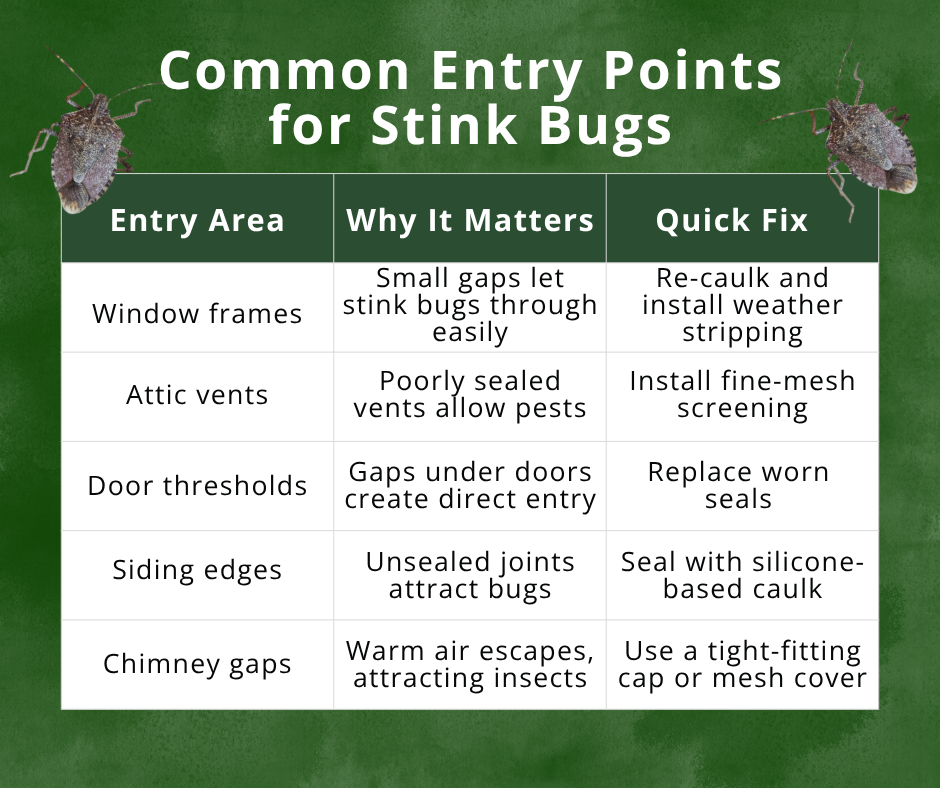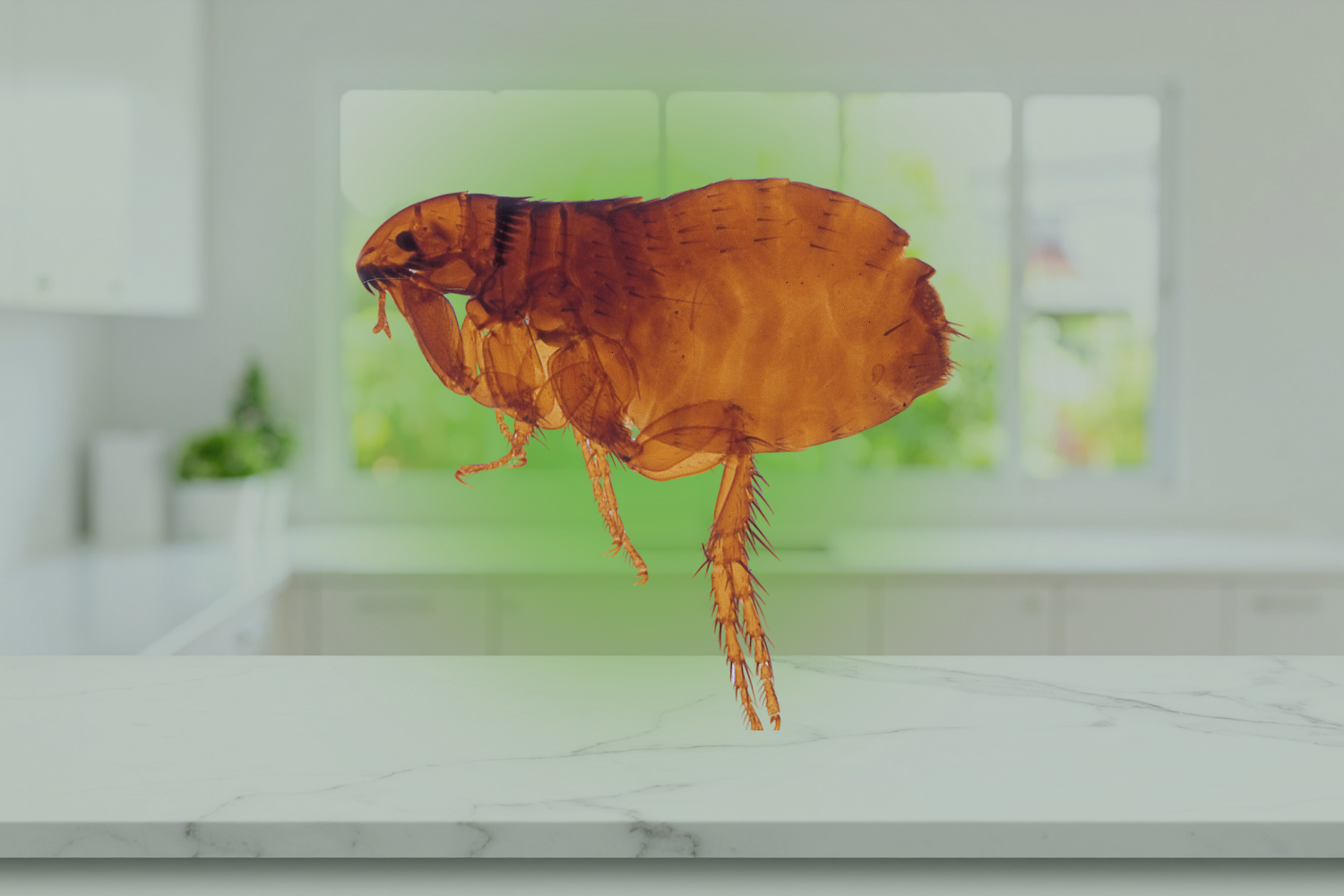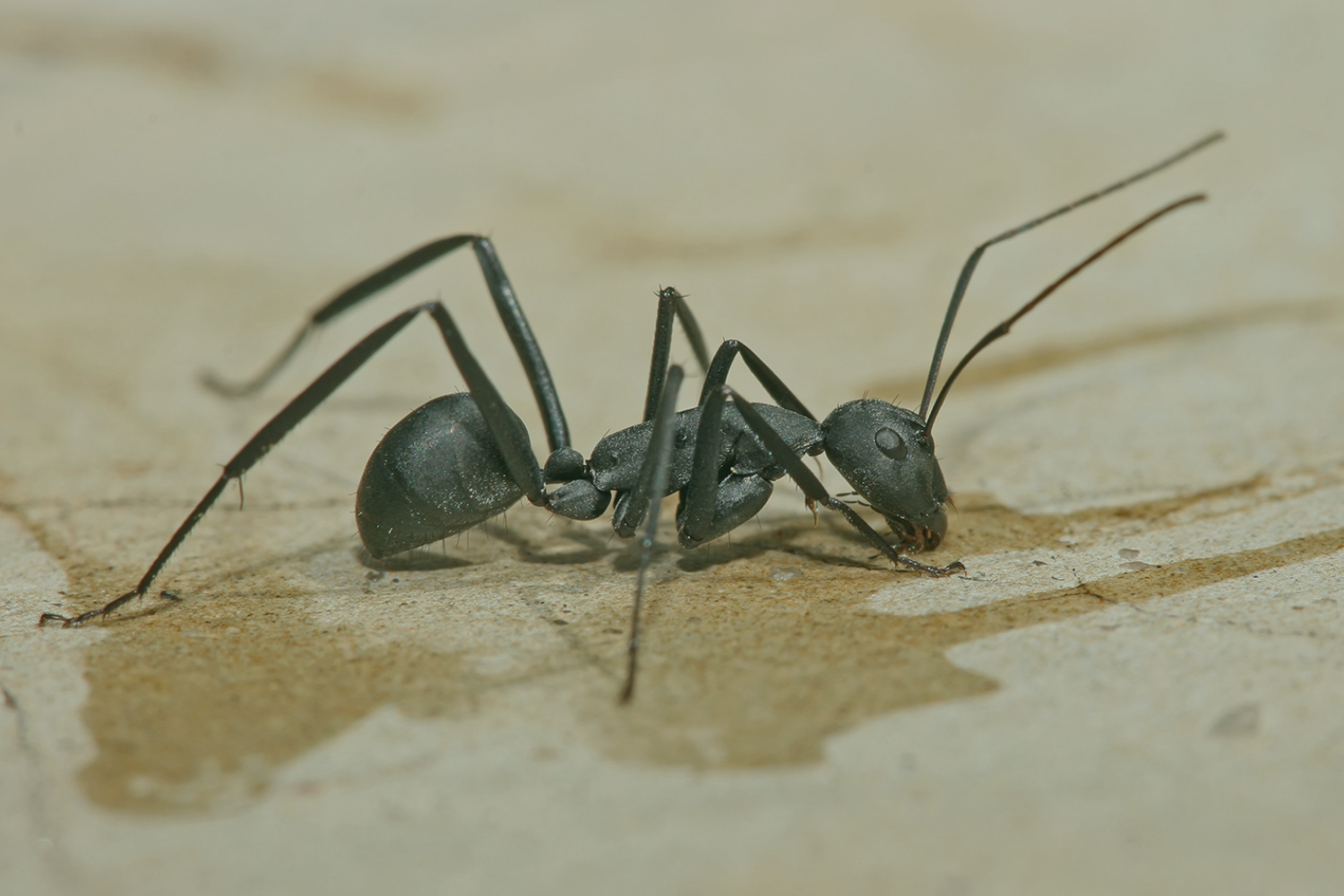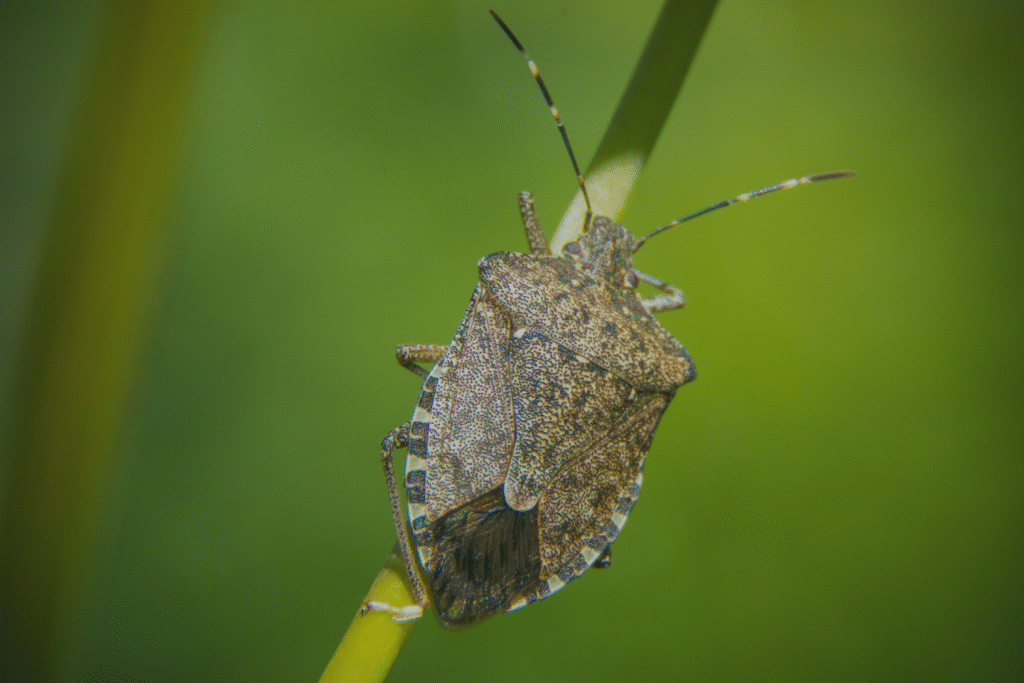
Stink bugs are mostly harmless to people and pets, but they’re notorious for being one of the most unpleasant household pests in Washington during the fall.
As temperatures drop, these shield-shaped insects start looking for warmth and shelter, and unfortunately, your home offers the perfect spot. While they won’t bite or cause structural damage, their smell, persistence, and tendency to appear in large numbers make them frustrating to deal with.
In this article, we’ll answer the key question, “Are stink bugs dangerous?”, explain their behavior, and show you how to keep them out of your home for good.
What Exactly Are Stink Bugs?
Stink bugs are not dangerous, but they are invasive and extremely resilient pests. The most common species found in Washington is the brown marmorated stink bug (Halyomorpha halys). This pest was accidentally introduced to the United States from Asia in the 1990s and has since spread throughout the country, thriving in mild, humid climates like the Pacific Northwest.
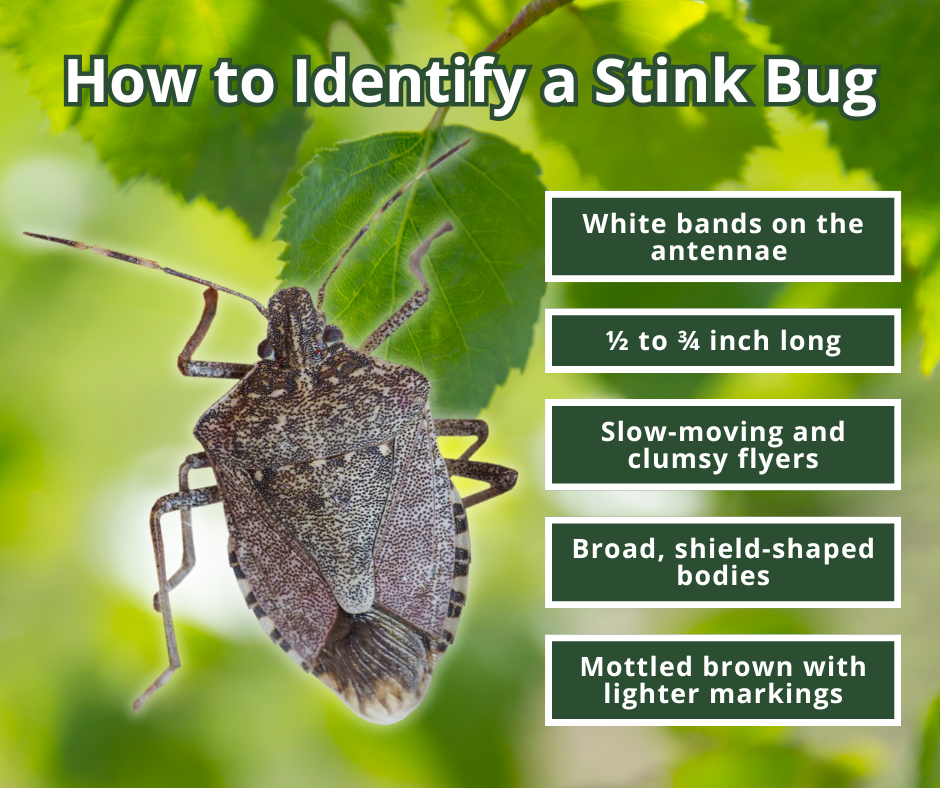
Here’s what to know about them:
- Shape: Broad, shield-shaped bodies about ½ to ¾ inch long
- Color: Mottled brown with lighter markings
- Distinct features: White bands on the antennae and alternating dark/light patterns on the abdomen
- Behavior: Slow-moving and clumsy flyers; drawn to warmth and light
When threatened or crushed, stink bugs release a foul-smelling chemical from glands near their abdomen. This defensive odor, often compared to rotten herbs or cilantro, is what gives them their name. Interestingly, the smell can linger on skin, fabrics, or walls and even attract more stink bugs if not properly cleaned.
Fun Fact: The brown marmorated stink bug has over 100 plant hosts, making it one of the most adaptable pests in the U.S.
Are Stink Bugs Dangerous to Humans or Pets?
No, stink bugs are not dangerous to humans or pets. They do not bite, sting, or carry diseases. Their mouthparts are designed for piercing plant material, not skin, so they’re physically incapable of harming you.
However, their odor can cause minor allergic reactions or irritation in sensitive individuals. Some people report:
- Mild skin redness or itching if they come into contact with crushed bugs
- Sneezing or watery eyes from inhaling the defensive chemical
- Nausea or headache in extreme infestations due to strong odor buildup
For pets, the same rule applies. Stink bugs are not poisonous, but eating them may cause mild drooling, vomiting, or stomach discomfort. Dogs and cats usually learn their lesson after the first encounter.
If you touch or crush one:
Wash your hands with soap and warm water to remove the odor and avoid touching your face or eyes.
In short, stink bugs are annoying but not dangerous. Their biggest threat is to your comfort, not your health.
Are Stink Bugs Dangerous to Your Home or Belongings?
Stink bugs won’t chew through walls or furniture, but they can still cause problems in your home. When fall arrives, they slip indoors through even the tiniest gaps, settling in walls, attics, and window frames. Once inside, they release pheromones to signal a safe overwintering spot, which can attract dozens more.
Common issues homeowners face:
- Odor buildup: Crushing or vacuuming them can release a strong smell that lingers for days.
- Staining: Their secretions can leave oily marks on fabrics, curtains, and painted walls.
- Noise: On warmer winter days, stink bugs may crawl or buzz inside walls trying to find their way out.
They’re not destructive, but the nuisance factor is high. Worse, since they often hide in inaccessible areas, homeowners might not realize they’re inside until the following spring, when the bugs reemerge in search of sunlight.
Preventive tip: Focus on sealing up cracks, siding joints, and window edges before fall to stop stink bugs from entering in the first place.
Are Stink Bugs Dangerous to Gardens and Crops?
Yes, stink bugs can be very damaging to gardens and crops, even though they’re harmless indoors. Their true impact is agricultural. Stink bugs feed by piercing fruits, vegetables, and plants with their needle-like mouthparts, sucking out juices and nutrients. This leaves behind small, sunken spots and deformed growth, ruining both appearance and taste.
Common plants at risk include:
- Tomatoes, peppers, and beans
- Apples, peaches, pears, and other fruits
- Corn, soybeans, and other crops
In Washington, this can mean a significant loss for both homeowners with gardens and local farmers. According to National Geographic data, stink bugs have caused tens of millions in crop losses nationwide since their arrival.
While one or two stink bugs won’t destroy your garden, a large infestation can do visible damage in just a few days. Gardeners should inspect plants regularly and remove stink bugs by hand or with natural repellents like neem oil or garlic spray.
Tip for gardeners: Keep outdoor lighting low at night. Lights attract stink bugs from far distances.
Why Do Stink Bugs Invade Homes in Fall?
Stink bugs invade homes in the fall because they’re looking for warmth and shelter before winter. As outdoor temperatures drop below 60°F, these insects begin a process called overwintering, essentially hibernating in protected environments until spring.
Your home’s cracks, vents, and siding gaps provide perfect entry points. Once inside, they gather in clusters, often between walls or in attics, where they remain inactive through the colder months.
Most common entry points:
- Gaps around window frames or door seals
- Attic vents and soffits
- Chimneys and exterior light fixtures
- Loose siding or utility openings
During the first warm days of spring, they wake up and accidentally wander into living spaces while trying to exit. That’s why many homeowners see them in March or April, even though the invasion started months earlier.
Prevention checklist:
- Seal cracks and install weather stripping
- Check vents and chimneys for openings
- Replace torn window or door screens
- Use a professional exclusion service if infestations repeat yearly
How to Get Rid of Stink Bugs Safely
The safest way to get rid of stink bugs is to remove them gently and prevent new ones from entering. Crushing them not only releases odor but can also attract others through pheromones.
Here’s how to handle stink bugs the right way:
- Vacuum carefully: Use a vacuum with a disposable bag. After collecting stink bugs, seal and throw away the bag outdoors.
- Soap and water trap: Fill a pan with soapy water and place it under a light source at night. Stink bugs are drawn to light, fall into the water, and can’t escape.
- Seal entry points: Apply silicone caulk around doors, windows, and utility pipes.
- Adjust lighting: Turn off porch lights when not needed; replace bright white bulbs with warm or yellow tones that attract fewer insects.
- Natural repellents: Some homeowners use essential oils like peppermint or clove as deterrents around entry points.
What not to do: Avoid using fly swatters or bug sprays designed for flying insects indoors. They don’t work well on stink bugs and can make the smell worse.
Related Questions
Do stink bugs bite or sting?
No, stink bugs can’t bite or sting. Their mouthparts are for piercing plant tissue, not skin. If one lands on you, it’s harmless. Simply brush it away or trap it in tissue.
Why do stink bugs smell so bad?
Their odor comes from defensive chemicals released when they feel threatened. Crushing or even touching them roughly can trigger this reaction. The smell is meant to deter predators, but it’s extremely unpleasant indoors.
Are stink bugs attracted to light?
Yes, stink bugs are drawn to light and warmth, especially in the evening. Keeping blinds closed and reducing outdoor lighting can help minimize attraction.
When are stink bugs most active?
They’re most active from late summer through early fall. In spring, you may see them again as they try to exit your home.
When to Call a Professional
You should call a professional pest control company when stink bugs keep reappearing, when you notice clusters around windows, or when DIY methods stop working. While removing visible bugs can help temporarily, the real issue is identifying and sealing entry points that you can’t easily find yourself.
A professional pest expert can:
- Locate hidden entryways around siding, vents, and foundations
- Apply targeted, eco-friendly treatments to stop entry and reproduction
- Set up ongoing prevention plans to keep stink bugs and other fall pests out year-round
At Bigfoot Pest Management, our preventive approach focuses on long-term control, not just temporary removal.
Conclusion
So, are stink bugs dangerous? No, they’re harmless to people and pets, but highly annoying and potentially destructive to gardens. Their odor, large numbers, and seasonal invasions make them one of the most frustrating pests in Washington homes.
The best way to handle them is through prevention like sealing cracks, managing lights, and scheduling professional pest inspections before fall. With help from Bigfoot Pest Management, you can stop stink bugs before they settle in and enjoy a pest-free home year after year.
What Does a Home Infestation of Fleas Look Like?
An infestation of fleas looks like repeated bites on people or pets, constant scratching, and small dark insects jumping from carpets, furniture, or pet bedding.…
Read MoreWhat Do Carpenter Ants Look Like in Washington Homes?
When homeowners ask what do carpenter ants look like in Washington homes, the answer is simple. Carpenter ants are large black or dark red ants…
Read More



